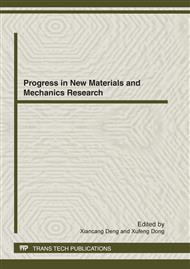p.12
p.17
p.23
p.31
p.36
p.41
p.46
p.51
p.56
Experimental Study on Galling Behavior of Advanced High Strength Steel in Sheet Metal Forming
Abstract:
Galling is a known failure mechanism in many sheet metal forming processes. It limits the lifetime of tools and the quality of the products is affected. In this study, U-channel stamping experiments are performed to investigate the galling behavior of the advanced high strength steels in sheet metal forming . The sheet materials used in the tests are DP590 and DP780. In addition to the DP steels, the mild steel B170P1 is tested as a reference material in this study. Experimental results indicate that galling problem becomes severe in the forming process and the galling tendency can be divided into three different stages. The results also show that sheet material and tool hardness have crucial effects on galling performance in the forming of advanced high strength steels. In this study, DP780 results in the most heaviest galling among the three types of sheet materials. Galling performance are improved with increased hardness of the forming tool.
Info:
Periodical:
Pages:
36-40
Citation:
Online since:
April 2012
Authors:
Price:
Сopyright:
© 2012 Trans Tech Publications Ltd. All Rights Reserved
Share:
Citation:


